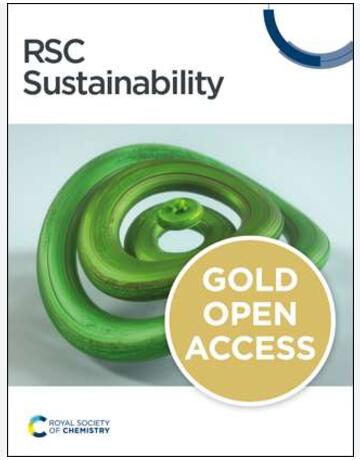全球河流中有机氯、有机磷和拟除虫菊酯农药的浓度(2014-2024 年):综述
IF 3.3
3区 环境科学与生态学
Q2 ENVIRONMENTAL SCIENCES
引用次数: 0
摘要
杀虫剂的广泛使用导致了自然资源的污染,有时会对环境和人类健康造成重大的、不可逆转的损害。尽管许多杀虫剂已被禁止使用,但这些化合物仍在世界各地的河流中被发现。本综述选取了 205 份文件,概述了过去 10 年(2014-2024 年)河流中农药污染的情况。在对这些文件进行研究后,根据最常检测到的农药类型,包括有机氯、有机磷和拟除虫菊酯化合物,对 47 个河流系统的信息进行了整理。共对 156 种化合物进行了分类,结果显示,46% 的河流含有有机氯化合物,40% 的河流含有有机磷农药。艾氏剂、六氯环己烷和硫丹是主要的有机氯农药,浓度值在 0.4 至 37 × 105 纳克/升之间。毒死蜱、马拉硫磷和二嗪农是主要的有机磷农药,浓度值在 1 至 11 × 105 纳克/升之间。将农药浓度与标准指南进行比较后,我们发现印度的甘加河(90 纳克/升-1)、尼日利亚的奥万河和奥库拉河(210 纳克/升-1 和 9 × 103 纳克/升-1)以及越南的同奈河(68 纳克/升-1)的艾氏剂含量超过了允许水平(30 纳克/升-1)。本文章由计算机程序翻译,如有差异,请以英文原文为准。
Concentrations of Organochlorine, Organophosphorus, and Pyrethroid Pesticides in Rivers Worldwide (2014–2024): A Review
The extensive use of pesticides has led to the contamination of natural resources, sometimes causing significant and irreversible damage to the environment and human health. Even though the use of many pesticides is banned, these compounds are still being found in rivers worldwide. In this review, 205 documents have been selected to provide an overview of pesticide contamination in rivers over the last 10 years (2014–2024). After these documents were examined, information of 47 river systems was organized according to the types of pesticides most frequently detected, including organochloride, organophosphorus, and pyrethroid compounds. A total of 156 compounds were classified, showing that 46% of these rivers contain organochlorine compounds, while 40% exhibit organophosphorus pesticides. Aldrin, hexachlorocyclohexane, and endosulfan were the predominant organochlorine pesticides with concentration values between 0.4 and 37 × 105 ng L−1. Chlorpyrifos, malathion, and diazinon were the main organophosphorus pesticides with concentrations between 1 and 11 × 105 ng L−1. Comparing the pesticide concentrations with standard guidelines, we found that the Ganga River in India (90 ng L−1), the Owan and Okura Rivers in Nigeria (210 and 9 × 103 ng L−1), and the Dong Nai River in Vietnam (68 ng L−1) exceed the permissible levels of aldrin (30 ng L−1).
求助全文
通过发布文献求助,成功后即可免费获取论文全文。
去求助
来源期刊

Sustainability
ENVIRONMENTAL SCIENCES-ENVIRONMENTAL SCIENCES
CiteScore
6.80
自引率
20.50%
发文量
14120
审稿时长
17.72 days
期刊介绍:
Sustainability (ISSN 2071-1050) is an international and cross-disciplinary scholarly, open access journal of environmental, cultural, economic and social sustainability of human beings, which provides an advanced forum for studies related to sustainability and sustainable development. It publishes reviews, regular research papers, communications and short notes, and there is no restriction on the length of the papers. Our aim is to encourage scientists to publish their experimental and theoretical research relating to natural sciences, social sciences and humanities in as much detail as possible in order to promote scientific predictions and impact assessments of global change and development. Full experimental and methodical details must be provided so that the results can be reproduced.
 求助内容:
求助内容: 应助结果提醒方式:
应助结果提醒方式:


